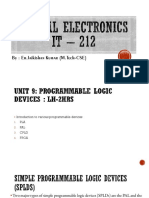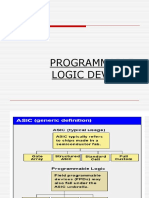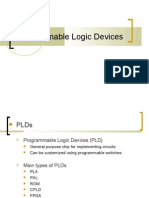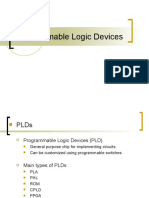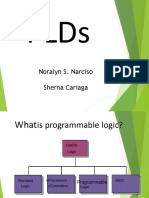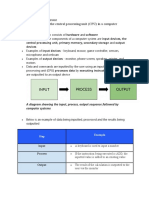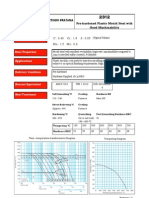0% found this document useful (0 votes)
8 views24 pagesDE Programmable Logic Devices
The document provides an overview of Programmable Logic Devices (PLDs), including their advantages, types, and comparisons with Application Specific ICs (ASICs). It details various PLDs such as ROM, PAL, CPLD, and FPGA, highlighting their functionalities, applications, and design considerations. The document also compares CPLDs and FPGAs in terms of complexity, power consumption, and suitability for different applications.
Uploaded by
yharshyadavh20Copyright
© © All Rights Reserved
We take content rights seriously. If you suspect this is your content, claim it here.
Available Formats
Download as PDF, TXT or read online on Scribd
0% found this document useful (0 votes)
8 views24 pagesDE Programmable Logic Devices
The document provides an overview of Programmable Logic Devices (PLDs), including their advantages, types, and comparisons with Application Specific ICs (ASICs). It details various PLDs such as ROM, PAL, CPLD, and FPGA, highlighting their functionalities, applications, and design considerations. The document also compares CPLDs and FPGAs in terms of complexity, power consumption, and suitability for different applications.
Uploaded by
yharshyadavh20Copyright
© © All Rights Reserved
We take content rights seriously. If you suspect this is your content, claim it here.
Available Formats
Download as PDF, TXT or read online on Scribd
/ 24













